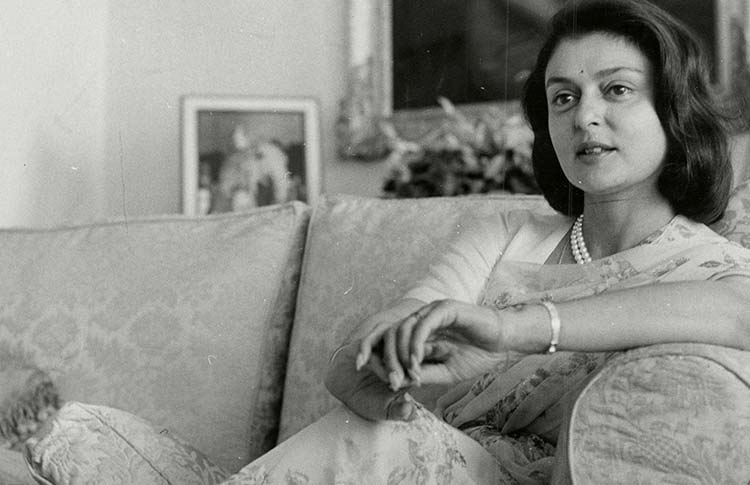In the latest music video titled “Time is Money,” musicians Raj, Reble, and BeBhumika, guided by director Shabad Sarin, delve into the challenges that independent artists face in a digital age dominated by algorithms and fleeting attention spans. Sarin, the creative force behind the lens, highlights the pervasive influence of technology on contemporary art consumption.
Speaking to Svasa, Sarin refers to the repetitive eye imagery, emphasising the concept of algorithms dictating what content reaches the audience, often favouring commercialised, dopamine-triggering content over deeper artistic expression. He notes, “The audience has shifted from one that is sonically inclined to one that is more visually inclined, and music is now seen as a dying form of art, being turned into a commodity instead of one that provokes thought and reaction.”
The collaborative effort to create a video that captures the essence of the independent artist’s journey began with Raj’s desire to launch an album. Given full creative reign, Sarin seised upon the concept of visual storytelling to convey the evolving landscape of the music industry- the relentless pursuit of validation in a digital age, the identity crises and the exploitation.
From the portrayal of artists balancing on the tightrope between creativity and conformity to the empty promises of fame and the solitary spotlight of recognition, each frame is meticulously crafted to provoke introspection. Reble, sitting amidst a bed of flowers, represents the quest for recognition. “An artist needs to reap their flowers, find appreciation on their own instead of waiting for the world to find out who they are,” Sarin explains. The idea for the visual stemmed from a YouTube comment the director read, “They got their flowers too late.” The comment referred to an Indie musician passing away. The scene is juxtaposed against the looming figure of a label executive wielding power like a capitalist gatekeeper. Drawing parallels to iconic imagery reminiscent of Pink Floyd’s “Wish You Were Here” (1975) album cover, Sarin reflects on corporates and label executives churning out whatever they can till the artist is of relevance, driven purely by profit margins.
Behind the scenes at ‘Time is Money’ shoot
Central to the narrative is the depiction of artists navigating through a mesh of expectations and disappointments. Shot in an empty studio, (keep your eyes open, or you’ll miss the scene) Raj appears for a split second before the frame goes dark. Initially perceived as an idea of an abandoned theatre, where the artist gets a spotlight for a split second in front of empty chairs, the scene translates to a demotivating reality. Frequently, artists are assured of substantial attendance, yet in reality, they are offered only the opportunity to serve as the opening act, often accompanied by minimal financial compensation, or in some cases, none at all. Occasionally, they find themselves performing in an empty venue. Sarin reflects, “One Instagram post gets a thousand likes before the algorithm decides the rest of your content will not be given coverage. It is very demotivating.”
“Tell em ladies, they ain’t gotta strip off what they got
but if it makes em feel better then we ain’t gotta judge”
The scene zooms into Reble’s face, highlighting female voices being reduced to visual spectacles for the male gaze. No matter the artistic expression, half of the comments under a womxn’s post are purely about looks.
Another motif within the song addresses the multitude of roles and paths that a creative individual must traverse to embody the larger-than-life persona they present to the world. This is exemplified by individuals donning paper bags over their heads, encircling Reble and Raj as they navigate their respective journeys.
(L-R) Eye production by Honney Kaushal and The Black Deer Creation; The scene zooming into Reble’s face
Much of the inspiration behind Time is Money draws from Kendrick Lamar’s legendary video, Element. “It made me realise you don’t necessarily have to make a full storyline to narrate your point of view. You can just pick out scenes and spots and portray them as a full cohesive story.”
In a world where time is money, this musical collaboration attempts to reflect on the true cost of artistic expression, the toll of capitalist structures on the artistic landscape and the enduring resilience of creatives striving to carve out their place in a digital age. “I hope for a shift in the industry,” Sarin muses, “towards artist empowerment and sustainable recognition.” In a culture increasingly shaped by social media, the possibility of a future where artists reclaim their autonomy and find solace through genuine connections with their audience remains shrouded in uncertainty.
Words by Aditi Bhaskar.
Image courtesy Team ‘Time is Money’








